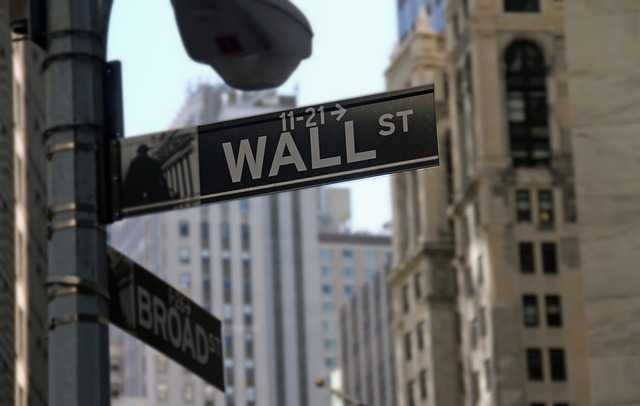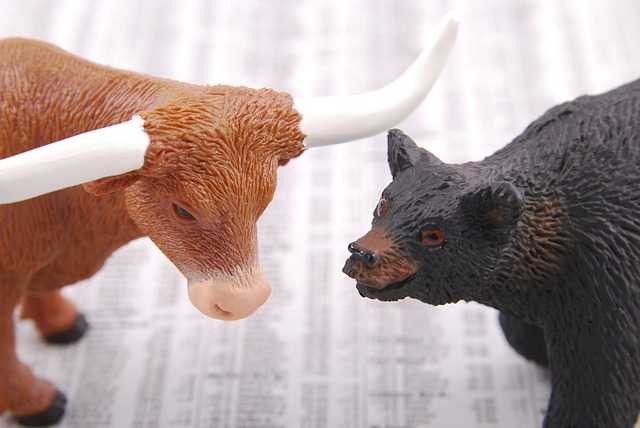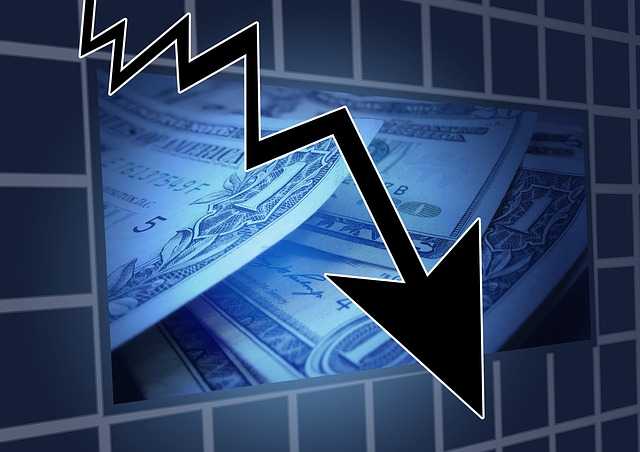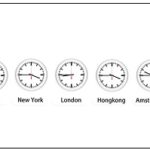The book How I Made $ 2,000,000 in the Stock Market by Nicolas Darvas is the author’s journey of earning 2 million dollars in the US stock market in a period of just 18 months. The book starts with the author purchasing stocks of a company just as a professional courtesy without any knowledge and ends with the author giving an interview to Time magazine about his success in the stock market.

The book brings light to the fact that how the author who was professionally a dancer was able to earn such a huge profit. The time period of earning that profit is just 18 months but there were 5 years of continuous investing and learning behind it. He didn’t do it by luck; he did it by making his own theory about the stocks through his experience and the numerous books he read.
The Canadian Period
The author was a professional dancer. In November 1952, he was offered to dance in a Toronto nightclub but the payment was to be made in stocks of a company Brilund (in the Canadian stock market). Though the author was not able to perform at that club due to his schedule, but as a gesture, he offered to buy 6000 at 50 cents shares of the company. The author bought the shares and forgot about them. After two months he thought of checking about the shares he bought. He was surprised as the stock was now sitting at $1.9. Without him knowing he made a profit of approx $8000. And that’s how his journey in the stock market started.
He was so impressed by this profit; he decided that he will invest more in the Canadian stock market. But he was confused as he knew nothing about the stock market. So he started asking every second person he met, about any good stock to invest in. But what followed was a period of total failure. He invested by getting tips from here and there or from the brokers but didn’t earn anything in the next six months. He owned 25-30 stocks at the time and was hopping like a grasshopper in and out of the stocks. Even when he made profits he was in overall loss due to the brokerage charges he didn’t account for.
The author then sought tips from financial advisory services and his brokers, as he thought it to be more authentic. He did get lucky a couple of times but by the end of 1953, his $11000 was down to $5800. He then moved to New York and as a result, started reading about the New York stock exchange. This lead to him gaining interest in Wall Street and decided to sell all his stocks in the Canadian stock market.
Entering Wall Street

He started with $15,800 to trade on Wall Street. He also opened an account with a brokerage firm. Initially, everything went well as the market was on a bull run. But then things started to slow down. He realized that no matter how small his profit was or how large his loss was, the broker always made money. He was also not able to understand the terminologies used in the market so he started reading books related to the stock market. His experience till now (April 1955) was very mixed. He certainly understood one thing that even the advisors were not giving a perfect stock to make fortunes. He was selling quickly to make small profits. His profits and loss were balancing each other.
Then he thought of entering the over-the-counter market (the market of unlisted securities). He entered this market and bought stocks of around 6-7 companies. In this market, the stock prices moved as per bid and ask prices. When he wanted to sell his stocks he found it difficult to find a buyer. And when he did, the deal would end up in him getting losses. Hence he returned to listed securities.
His experience till now taught him the following things –
- The tips from the advisory service are not perfect, so better not follow them.
- Broker can also be wrong.
- Wall street sayings should be ignored.
- Trade in listed stocks only and not in the “over the counter” market.
- Do not listen to rumors.
- One should study the market instead of gambling.
- Hold onto rising stock for a longer time rather than holding dozen stocks for shorter period.
Author during the same period developed his fundamental approach of evaluating the stocks. He would look at earnings, dividend history, and other reports of the company in his fundamental approach. One of his stocks, the Virginia railway gave him a profit of $1303. So he looked into it to find out the reasons for its good performance with the help of his broker. After studying, he got to know that the company paid a good dividend and had a fine earnings record. Its financial position was excellent. It was a fundamental reason behind the company’s rise. This made him confident about his fundamental approach.
The Author started studying the company profiles and their reports but even after studying, the stocks he chose were not performing as per the study.
My first crisis

The author tried to find out the following through fundamental analysis –
- The strongest industry group;
- The strongest company within that industry group.
He was so excited that finally, he is not relying on rumors and tips for selecting his stocks. He has now developed a scientific approach towards it.
On the basis of his judgment, he selected JONES & LAUGHLIN at 52¼ on margin, which at that time was 70%. On 23rd of September 1955, he bought 1,000 shares. The cost was $52,652.30 and he had to deposit $36,856.61 in cash. To raise this amount he kept all his assets as a guarantee.
On October 10th, when the stock dropped to $44, he panicked and sold his stocks with a net loss of $9069.18. The author was crushed. He was disappointed because it was not a gamble but a scientifically selected stock. He lost more than nine thousand dollars in the stock market and now he had a decision to make, whether to continue or stop but since he now has to save his property he continued.
Then he again started studying stock tables and one day he noticed Texas Gulf Producing, a stock he never heard of, was rising. He knew nothing about the company’s fundamentals but he still went for it and recovered more than half of the loss he made from Jones and Laughlin. This gave birth to his new theory.
The Technician
Developing the Box Theory
He realized that earning profit in the stock market doesn’t come out of luck. You can be lucky once twice but not consistently.

Then he bought stocks of two more companies Pittsburgh Metallurgical, M & M Wood Working on the same principles as Texas Gulf Producing. He suffered loss and profit in respective stocks.
He realized that stocks do not move in a haphazard manner. Their movement is defined in an upper and lower limit. These limits act as a frame which the author called “boxes”.
The stock price would oscillate in these boxes. This gave birth to his Box Theory. He then used this theory on 3 stocks and earned profit but suffered a big loss 4th time. And he was back where he started. This experience taught him the following things –
- There is no sure thing in the stock market.
- There is no place for pride and ego.
- He should not stick with any theory.
- He has to reduce the risks as far as it is possible.
The author then started including stop loss in his orders so that as soon as the stock falls below the expected price, he would not own them.
After this, he defined his objectives in the market as follows –
- Right stocks
- Right timing
- Small losses
- Big profits
And to realize these objectives, he had the following tools:
- Price and Volume
- Box theory
- Automatic buy-order
- Stop-loss sell-order
Cables Round the World
About the same time, he signed up for a 2-year tour all round the world. He was worried about how he would operate from other countries. Then he and his broker decided to stay in touch via cables (method of communication at that time) and used Barton’s financial publication to look for stocks.
He started giving instructions to his broker over cables. His cables from the broker had the closing price, the box (upper and lowest ranges throughout the day), and the general market trend. Whenever he suffered loss he used to write the reason for it and decide never to repeat the mistake. Then after some time, he started getting sold out of all the stocks he owned, and on Aug 26, 1957, he had zero stocks. His stop loss has sold him out. He didn’t understand at first but later it was declared that it is now a bear market.
This gave the author great confidence because by his theory he came out of the stocks without incurring a huge loss. His theory worked. He was on his own without any news and still, he was able to get out of the market on time.
The Techno-Fundamentalist
During the baby bear market

He accepted the market for what it was and realized that he cannot do anything but wait for better times to come. But during this time he kept his eyes constantly on the stocks.
He would select stocks on the basis of his technical theory but would only buy them if their fundamentals are right. And this is how he arrived at his techno-fundamentalist theory.
He knew that he has to find those companies that have something big coming up for them. He saw the examples of automobile giants which were once small companies. People who invested in them at that time made a lot of money. So he decided to find companies that are small right now but have a bright future in the coming months or years. These are high velocity, expensive-but-cheap (high price but cheap valuation) stocks.
The other reason to go for the high-priced stock was the brokerage charges, which increase with the number of shares.
He was now standing with 5 yrs of experience with lessons he got from his journey –
- The Canadian period taught him not to gamble.
- The Fundamentalist period taught him about industries, earnings, dividends, etc.
- The Technical period taught him how to interpret price movement of the stocks.
The Theory Starts to Work
His theory started to work. In November 1957 he noticed a stock- Lorillard. The stock fit in his theory and after observing for a while he bought the shares at the following rates –
| S.No | Number of shares | Unit Price in $ | Total Amount in $ |
| 1 | 200 | 28¾ | 5,808.76 |
| 2 | 200 | 35 | 7,065.00 |
| 3 | 200 | 36½ | 7,366.50 |
| 4 | 400 | 38⅝ | 15,587.24 |
| Total | 1000 | – | 35, 827.50 |
Then he bought Diner’s club –
| S.No | Number of shares | Unit Price in $ | Total Amount in $ |
| 1 | 500 | 24½ | 12,353.15 |
| 2 | 500 | 26⅛ | 13,167.65 |
| Total | 1000 | – | 25,520.80 |
The Diner’s club then fell below the stop loss and he was sold out. He received $35,848.85 and made an overall profit of $10,328.05. His theory worked. Just on the basis of cables and Barton’s he was able to book profit. He didn’t know any insider tips nor heard any rumors.
Then he noticed that El Bruce satisfies his theory. He decided to sell Lorillard and invest the money in El Bruce. He sold his 1000 shares at an average price of 57⅜ and made $21,052.95 profit. He bought El Bruce at the following prices –
| S.No. | Number of shares | Unit Price in $ | Total Amount in $ |
| 1 | 500 | 50¾ | 25,510.95 |
| 2 | 500 | 51⅛ | 25,698.90 |
| 3 | 500 | 51¾ | 26,012.20 |
| 4 | 500 | 52¾ | 26,513.45 |
| 5 | 500 | 53⅝ | 26,952.05 |
| Total | 2500 | – | 130,687.55 |
He was offered to sell these shares at $100 unit price but he didn’t. Because according to his theory, the stock still showed signs of growth. He then slowly sold his stocks in blocks of 100-200 shares at an average price of $171. He made $295,305.45 profit on this stock.
My First Half Million
In July 1958, an unknown company of that time ‘Universal Products’ caught the author’s attention as it satisfied the theory. The price at that time was $35 and was fluctuating between 35⅞ and 33½. To get the feel of the stock movement he bought 300 stocks at $35¼.
In the third week of August 1958, he cabled: “BUY 1200 UNIVERSAL PRODUCTS 36½ ON STOP 33 STOPLOSS”. Within the next few days, he bought 1500 more shares.
His transactions for Universal Products were like this –
| S.No. | Number of shares | Unit Price in $ | Total Amount in $ |
| 1 | 300 | 35¼ | 10,644.93 |
| 2 | 1200 | 36¼ | 44,083.56 |
| 3 | 1500 | 40.4 | 60,585.00 |
| Total | 3000 | 115,313.49 |
Following the same theory, he went on to buy 6000 shares of Thiokol for $350, 820 in different transactions. Thiokol touched 100 and Universal Products touched 45. The Author was tempted to sell but he held. In Jan 1959, the Author returned to New York. On his return, the brokers told him that his overall profits in the stock market were more than half a million dollars.
My Second Crisis

This profit turned his confidence into overconfidence. He started dealing more closely and sat in his broker’s office for operating. He stopped telling stop loss and he threw his theory out of the window. He started trading the way he used to when he just started trading. He was listening to everyone and everything but himself. And within a matter of few weeks, he lost $96,588.
He realized his mistake. He knew that earlier it was just him and his telegrams to make the decision. And now there are all sorts of distractions.
He then went to Paris and gave his broker special instructions of not calling him for any reason whatsoever. The only communication he wanted from them was his usual telegrams.
Initially, it was hard for him to again find his rhythm but he eventually did. He followed the same practice when he came back to New York in the third week of February 1959.
2 Million
He asked his brokers to send telegrams after the market closes. He kept away from all financial stories or commentaries. As prices began to fall, he decided to sell Universal products and earned a profit of $409,356.48.
Now he had this huge sum to invest and he did it in Texas instruments at the following prices –
| S.No | Number of shares | Unit Price in $ | Total Amount in $ |
| 1 | 2000 | 94¾ | 189,718.80 |
| 2 | 1500 | 97⅞ | 147,544.35 |
| 3 | 2000 | 101⅞ | 204,733.80 |
| Total | 5500 | – | 541,996.95 |
He then sold Thiokol. He paid a total of $350,820 and he received $1,212,851.52. The profit was $862,031.52.
He then made investments in Zenith Radio, Litton Industries, Fairchild Camera, and Beckman Instruments to get the feel of these stocks. After observing these four stocks, he carried on with Zenith Radio and Fairchild Camera. His transactions looked like this –
Zenith Radio
| S.No | Number of shares | Unit Price in $ | Total Amount in $ |
| 1 | 500 | 104.4 | 52,247.00 |
| 2 | 1500 | 99¾ | 150,359.70 |
| 3 | 1000 | 104.4 | 104,494.00 |
| 4 | 1000 | 105¼ | 105,745.30 |
| 5 | 1500 | 107½ | 161,996.25 |
| Total | 5500 | – | 574,842.25 |
Fairchild Camera
| S.No | Number of shares | Unit Price in $ | Total Amount in $ |
| 1 | 50 | 128.5 | 64,259.00 |
| 2 | 1000 | 123¼ | 123,763.30 |
| 3 | 1000 | 125.5 | 125,515.00 |
| 4 | 1000 | 126¼ | 126,766.30 |
| 5 | 1000 | 127.5 | 127,517.00 |
| Total | 4500 | – | 567,820.60 |
June 9th, The Author received a telegram quoting the current stock prices of his holding. On comparing it with the previous day’s telegram, he came to know that his holding appreciated $100k in that single day. He was very happy.
One day he had to leave New York for his professional commitments. Before going, he met his brokers. He found that, if he sells his stocks before leaving, he will make over $2,250,000. And this is how the Author made 2 million dollars in the Stock Market.
HE MADE IT! He felt content not just because he made two million dollars but because he was doing what he liked. He was working while Wall Street slept.
So, folks, this is how the Author, Mr. Nicolas Darvas made 2 million dollars in the stock market. If you liked our article then feel free to share it amongst your peers. If you want to share your viewpoint then let us know through the comment section below and if you want to read other personal finance-related books’ summaries then click here.



